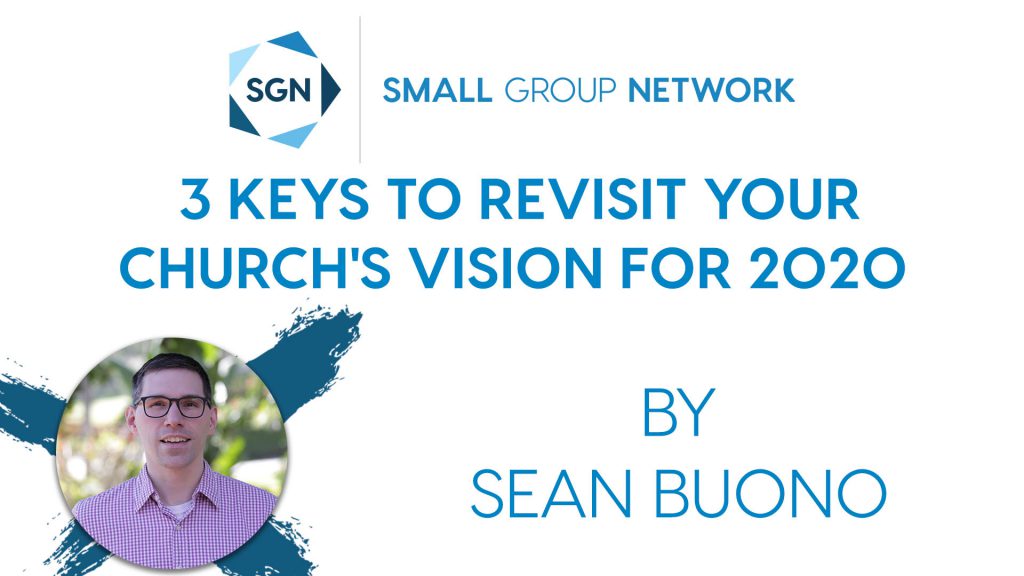
“This is the course I wish I would have had 35 years ago when I started small group ministry.” – Steve Gladen
Presenting our new online training course – “Align!” Align will help you learn the small group ministry essentials. It features…
- 8 HD video session taught by Steve Gladen
- A downloadable workbook
- Lesson discussion questions
- An official Small Group Network completion certificate
- A special gift to help further your Small Group Ministry
Learn more by watching the free course introduction & enroll here!
It’s surprising to think that we have arrived at the halfway mark of 2020; it feels like Covid-19 arrived on the scene just a short while ago. The entire world was impacted tremendously, and this year’s pandemic brought sudden changes to everyone’s lives. Not only were our daily routines quickly shaken up, but the plans and goals we all had on our minds during the month of January were suddenly overturned and left behind. With half of the year still to go, let us pause for a moment and reflect upon the 2020 vision that we had developed for our small group ministries such a short time ago.
Earlier this month, I found myself perusing Small Group Network’s pre-Covid resources, only to rediscover a Group Talk Podcast interview that discussed vision-casting with Steve Gladen (Click here for the link to this episode). Although I had listened to the interview when it was first published at the start of this year, the conversation now possessed a rather striking relevancy as I heard Steve’s words a second time through a Covid-19 lens. Here, let us explore a few key takeaways from the recorded conversation.
Vision and Goals are not the Same
Although the coronavirus may have derailed some of the plans that we had drafted at the start of the year, it is important to remember that a vision will operate more at the macro-level, while the church’s mission will operate more at the micro-level. Gladen explains within the interview that our goals are not the same as vision. Instead, goals act as “faith steps towards our vision” (emphasis mine). Should we miss our goals, it may be tempting to feel that we have failed our vision, but we must proceed with caution and not confuse the two. Gladen continues, explaining that in ministry, we will always encounter trauma, trouble and challenges along the way. To assist throughout the journey, our vision is like the North Star that helps in keeping us aligned with the plan that God had initially placed upon our hearts. Indeed, our vision is a calling or a movement that we are compelled to fulfill, where every decision made within the church contributes toward its success. A vision is an exciting, God-sized victory that we collectively aspire to achieve. In order for the members of our church to keep sight of it, we leaders are tasked to revisit the vision frequently. By doing this, we not only inspire our congregants to become more involved, but we also help to answer a question that each of them asks: “What is my role?”
Establish a Brain Trust
Have you invited godly people of differing opinions, strengths, and viewpoints into your leadership meetings? This Covid-19 season, we are all experiencing life in a way that is new to us. Even if we have been doing ministry for a decade or more, this year has likely caught us all off guard. As we continue to venture into unknown territory, it becomes important for us to be able to open our hearts and hear the needs and perspectives of various leaders within our communities. To get buy-in on implementing a vision, Gladen reminds us that we must do it relationally. He elaborates, explaining that “the stronger you are aligned in your vision, the stronger the people will take it on for you.” It is when we bounce ideas off of one another and have healthy dialogue that we are able to establish solidarity among the ranks and forge ahead.
A Season of Healing for Small Group Ministry
In the interview, Gladen notes that when a church has gone through a season of trauma, its vision moves toward the need for healing. With Covid-related deaths, mental health trials, loss of jobs, and also the events and protests surrounding the death of George Floyd, it can be easily argued that this year has in fact brought elements of trauma to the church community. With an entire world affected, church leaders can only do so much. In other words, the leadership team that is positioned at the helm of a church only possesses a finite amount of personal time, energy, resources, and giftings. In order for the church to be able to fulfill its God-sized ministry of healing, we are called to include as many church members as possible within the execution of its vision. It is here where a church’s small group ministry is essential and able to flourish. Whether you are launching online or in-person small groups this Fall, take special care to incorporate the elements of healing and fellowship into your church’s small group ministry vision. After such a tumultuous year, such an effort will certainly be welcomed and it can greatly assist in the re-entry strategy that your church will be implementing in the months that lie ahead.





